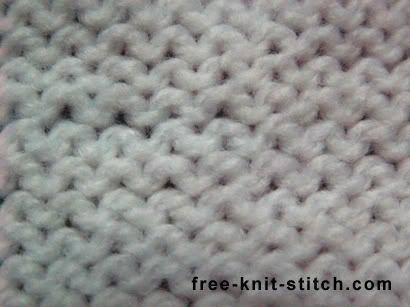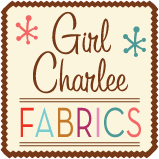Tutorials
No Fear
8:00 AM
Today begins the first post in the "No Fear" series and linky party. You might notice this is a partial repeat from my "Post 101". I want to be sure you have all the information you need, so each post will have a small repeat before it gets to the new content. I'll be sure to include a nice bold point so you know where to start! If you don't know what my "No Fear" series is about start reading below. Otherwise, jump to the BOLD.
I'm excited to be teaming up with 5 out of 4 (affiliate link) and Nature's Fabrics to present a series on getting OVER your fear of knits. No more sticking to wovens out of fear of knits. Knits aren't any scarier than wovens. They just need a little different kind of love. So every Friday I'll be giving you hints and tips and walk you through your first knit projects. Who should join? Anyone that has worked with a pattern in the past, is familiar with seam allowances and can sew a straight and a curved line on a pattern. You can complete all these projects with a basic sewing machine OR a serger. That's all you need to know! I'll walk you through the rest.
So up first, what pattern am I using for this series? Thanks to 5 out of 4, I am using their Versatility Pattern. This is a tank and pants (shorts, capris) pattern in sizes for women (affiliate link) OR kids (affiliate link). So whether you're going to practice by sewing for yourself or for a little one in your life, I have you covered. Don't forget to use the coupon code at the end to get your copy. The Versatility pattern has layers that will make it easy to assemble and is a simple enough pattern that I'm sure we can all follow along.
On to our fabrics. I'm so excited to be working with my sponsor Nature's Fabrics. They sent me 3 yards of fabric for this series and I'm eager to cut into them. AND, they're sponsoring a $25 gift card to Nature's Fabrics at the end of this series! I'll be giving away 2 yards of knit fabric from my stash AND 5 out of 4 is offering a free pattern too. How do you register to win? I'll be picking 3 (UPDATE) random winners from the linky party. Each week you'll have prompts of things that can be used in the linky party. I want to see lots of participation, so don't miss out!
With my fabric they sent me a sample pack of swatches. There was some amazing stuff in there. You should read about those before you purchase your fabrics.
With my fabric they sent me a sample pack of swatches. There was some amazing stuff in there. You should read about those before you purchase your fabrics.
I've been buying from Nature's Fabrics for many years now. I'm a HUGE fan of their wool interlock and their bamboo fabrics. They have an amazing line of wools and bamboo and those are absolutely decadent and worth every penny. You may notice that their fabrics are a little more expensive than other places, but I can assure you, they're worth the extra price. You may remember me raving about the stretch french terry I bought in this post about my Winter Wear Designs Aviators. Those are still my favorite pants.
Now that my sponsor intros are out of the way, on to the content of today's post!
You will need a knit pants pattern that is appropriate for knits with 25% stretch OR a simple woven pants pattern. I HIGHLY recommend following along with the Versatility Pattern (the coupon code will be at the end) but you may use any knits pants pattern to use these techniques.
I will cover tips for sewing up the tank in this series, but we will focus mainly on pants. Why? Because I believe strongly that mastery happens from doing the same things over and over again. And by using different fabrics, we'll be varying our pattern enough without throwing in entirely different garments and techniques.
There are TONS of knits out there. We aren't going to cover ALL of those fabrics. That'd take an entire series all on its own and I would probably miss a bunch.
Our first question is "what is a knit"?
A knit is a fabric that is made up of tiny loops.
The FRONT side of a knit fabric (whether made by using 2 knitting needles or by machine) is made up of little v-shaped looks. I've traced over the v's in this image to help you identify the v's.
The BACK side of the knit fabric looks like little dashed lines.
There are single and double knits but that isn't so important for you to know. What is most important is you need to be able to tell which is the "right side". When a fabric has a nice print on it, it is easy to tell right from wrong, and you can honestly use whichever side you like better. HOWEVER, solid cotton lycra has no printing. So be sure to check for those little v's to make sure you're cutting the right side of the fabric. Cutting the right side, means the fabric will consistently roll to either the front or back. Cotton lycra tends to roll towards the front.
So what's the big deal with those knit stitches? Those stitches are what makes your fabric stretch. That stretch makes for more comfort in our garments but also different challenges in our sewing. As with woven fabrics, you can check the end of the fabric bolt to see the fabric contents. OR when shopping online, most knits are labeled. When in doubt, contact the shop owner to find out if the knit you've chosen is the right type with the appropriate amount of stretch for your fabric.
The FRONT side of a knit fabric (whether made by using 2 knitting needles or by machine) is made up of little v-shaped looks. I've traced over the v's in this image to help you identify the v's.
The BACK side of the knit fabric looks like little dashed lines.
There are single and double knits but that isn't so important for you to know. What is most important is you need to be able to tell which is the "right side". When a fabric has a nice print on it, it is easy to tell right from wrong, and you can honestly use whichever side you like better. HOWEVER, solid cotton lycra has no printing. So be sure to check for those little v's to make sure you're cutting the right side of the fabric. Cutting the right side, means the fabric will consistently roll to either the front or back. Cotton lycra tends to roll towards the front.
So what's the big deal with those knit stitches? Those stitches are what makes your fabric stretch. That stretch makes for more comfort in our garments but also different challenges in our sewing. As with woven fabrics, you can check the end of the fabric bolt to see the fabric contents. OR when shopping online, most knits are labeled. When in doubt, contact the shop owner to find out if the knit you've chosen is the right type with the appropriate amount of stretch for your fabric.
So what fabrics do you actually need?
Our first project is going to be cotton interlock. Nature's fabric has a pretty substantial selection of Cotton Interlock. You can also find it at Joanns and some Hobby Lobby's have a limited selection. Cotton interlock is a very stable knit. It stretches in only 2 directions (selvedge to selvedge) NOT up and down. This makes it MUCH easier to work with. And it doesn't curl like other knits, which means when you stretch it, it doesn't distort your seam allowances. Its a bit like working with wovens, only it's a knit. For all of your knits you will need a stretch percentage of at least 25%.
The one thing that makes cotton interlock special is that it has no right or wrong side. We'll talk about the advantage of that later. Another note about cotton interlock is that while it stretches, it doesn't have any lycra, so it doesn't have any bouce back. That means if you pull 4" of the fabric to 5", it will likely stay at 4.5-5" wide until it is washed and returns back to 4". That makes it bad for bands or anything that needs to support its own shape.
The one thing that makes cotton interlock special is that it has no right or wrong side. We'll talk about the advantage of that later. Another note about cotton interlock is that while it stretches, it doesn't have any lycra, so it doesn't have any bouce back. That means if you pull 4" of the fabric to 5", it will likely stay at 4.5-5" wide until it is washed and returns back to 4". That makes it bad for bands or anything that needs to support its own shape.
Our photos here show you
1- cut edges and selvedge edges do not roll
 |
| cut edges and selvedge do NOT curl |
2-front and back look identical. I drew a line on my photo because you couldn't see the selvedge edge!
3- when you stretch 4" of interlock as hard as you can, when you let go, it does NOT return to 4". It will remain stretched out.
 |
| 4" cotton interlock |
 |
| 4" cotton interlock AFTER stretching (approximately 4 3/4" cotton interlock) |
Second on our list is cotton lycra or cotton spandex. These fabrics have anywhere between 2 and 10-12% lycra/spandex with 5% being pretty average. These fabrics often stretch up to 100% but have amazing bounce back and don't stretch out like other fabrics. Cotton Lycra stretches both vertically and horizontally. Cotton lycra is pretty readily available in the US. There are many great sources and you can find them just about everywhere. Any cotton lycra will work on this project. DO NOT get a rayon spandex for this project. While they're beautiful and soft and drapey, they also present some challenges that make them not the best choice for a beginner or this project.
Our photos here show you
1-cut edges curl toward the front and selvedge edges curl towards the back.
 |
| Cotton lycra curls from back to front along cut lines and front to back at selvedge |
 |
| 4" of cotton lycra |
 |
| 4" of cotton lycra after stretching (approximately 4 1/8") |
Our photos here show you
1- cut edges curl toward the front and selvedge edges curl towards teh back.
2-when you stretch 4" of cotton jersey, you will end up with about 4 1/2" of cotton jersey. There is limited stretch recovery.
 |
| 4" Cotton Interlock |
 |
| 4' of cotton jersey after stretching (approximately 4 1/2") |
First thing you're going to need is a pattern. So head over to 5 out of 4 to get your copy of either the women's or kid's versatility. And don't forget your coupon code! The code is: nofear
Then go out and get your 3 knit fabrics. Check the size charts for the pattern to be sure you purchase enough fabric for each project. You will need fabric yardage for 1 pair of pants (shorts or capris) in:
Cotton Interlock
Cotton Lycra
Cotton Jersey
Next week we will be talking about tips for sewing with knits and then cutting into our fabric and sewing our first pair of pants! I can't wait.
I want to see the fabrics you pick, so be sure to post them in the linky party! I'll link up the 3 fabrics I choose from Nature's Fabrics so you can see what I've picked. You can link up to 3 fabrics that you will be using during the series AND 1 extra link by going to Nature's Fabrics and linking a fabric you like from there! That's 4 entries this week, so get linking!
























0 comments